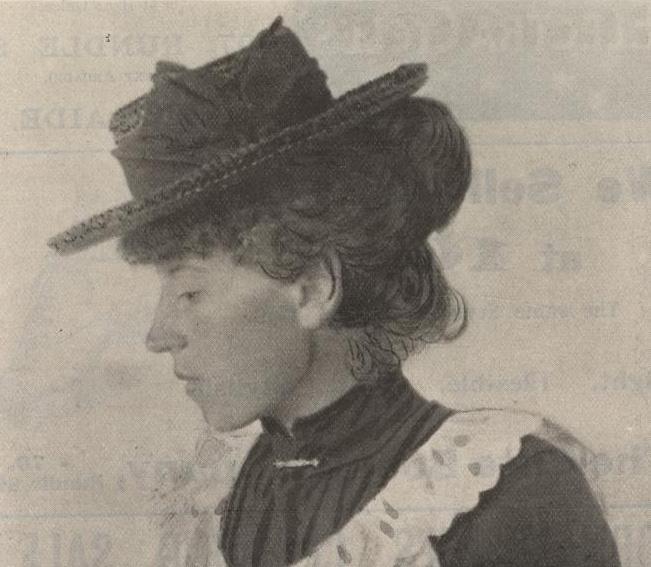
Who killed Bertha Schippan?
A South Australian true crime story.
According to Mary, she had woken up at around 10.30 pm to find a man in their room. After a terrifying struggle Mary had managed to break free from the bearded attacker and had run from the house. Behind her, she heard a single scream from Bertha.
At first her brothers thought that Mary had just been frightened by a nightmare. When they realised what had happened, the older brother ran half a mile to the Schippan’s nearest neighbour. The neighbour refused to help, and August returned home. The siblings then armed themselves with pitchforks and a stick and returned to the main house, calling for Bertha as they did so. But there was no answer.
Terrified, they walked over a kilometre to the house of District Constable Alfred Lambert who took them back to the farm to see what had happened. Sadly, they found Bertha’s body on the floor of her parents’ bedroom.
Constable Lambert took the trio back to his own family home for the night. In the morning he informed Mounted Constable Mowbray at the Truro station, who in turn sent a telegram to the Police Commissioner in Adelaide.
Matthes and Johanne Schippan arrived home later that day. Matthes identified his daughter’s body and on January 3, Bertha was buried in the nearby Sedan Cemetery.
The local coroner, Mr J Mulligan, arrived at the Schippan farm on January 9 to conduct an inquest. This ran for two days and involved a jury of six local men. Watched by a crowd of spectators from across the district, they discussed the evidence – two knives found in the house, a tin bowl containing water and traces of blood, a towel and clothing, both blood-stained. They viewed Mary’s bruises and her blood-stained arms and legs. They also had the unenviable task of viewing the 40 stab and defence wounds on young Bertha’s neck and face. Her throat had been savagely slashed three or four times by a right-handed person. No sign of sexual assault was found.
The inquest focused strongly on several small blood stains which were on a skirt Mary said she had grabbed as she ran out of the house to escape her attacker. The family insisted that these came from a sheep which had been slaughtered days earlier. Another mystery surrounded the clothes Mary had worn that night. She left the house to seek help in a pink blouse. She testified that she also owned a blue blouse. The significance of this was that a blood-stained blue cuff and sleeve fragment had been found under Bertha’s body. The rest of Mary’s blue blouse was never found.
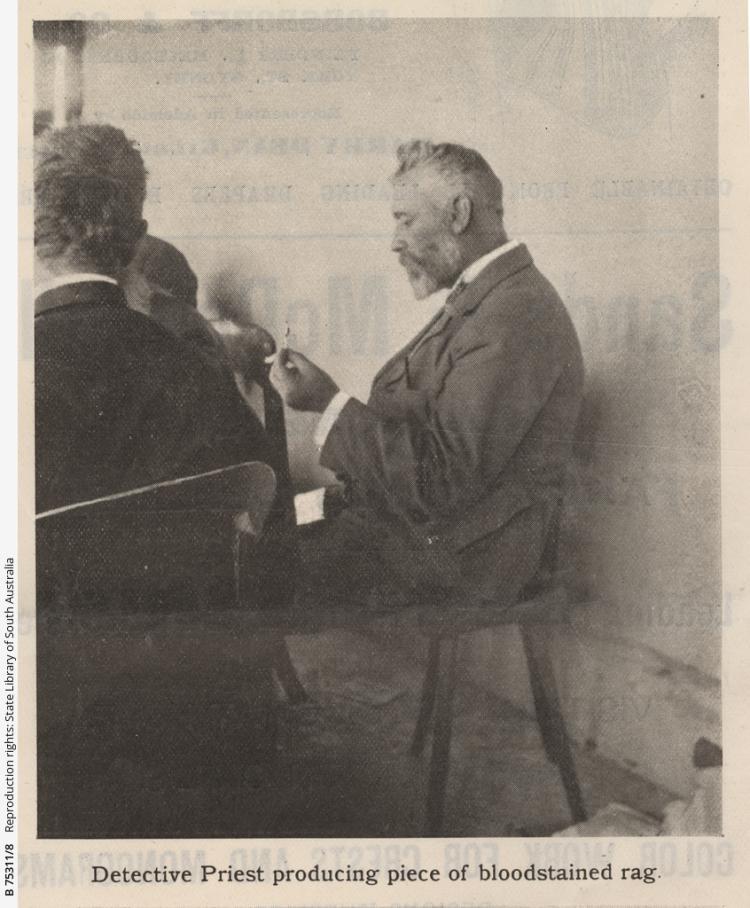
There were also questions about Mary’s hair. The doctor who had examined her said it had been freshly washed but Constable Lambert’s mother stated that Mary had not washed her hair at the Lambert’s house. So where and when had this happened? And why, if not to hide something?
After an hour’s deliberation, the inquest jury returned. The local coroner, Mr Mulligan had tears in his eyes as he pronounced the verdict. The jury was of the opinion that Bertha Schippan’s throat had been cut by her sister Mary, who would now stand trial for her murder. She was taken away, sobbing, and placed in a cell in Angaston before being transferred to Adelaide the following day.
The case was considered so sensational that a team of horse and bicycle couriers was set up to relay news from Towitta back to Adelaide. Rival papers The Advertiser and The Register tried desperately to be the first to publish breaking news, but The Advertiser had a secret weapon. They had bought a motor car. This was the first time a car had been used for reporting the news and it made Australian journalism history as it raced to the telegraph station at Angaston, 26 kilometres from Towitta. Despite a couple of minor accidents, the speed of the new vehicle made it possible to continually scoop the opposition.
Mary’s trial began in March 1902 in Adelaide and lasted six days. She was represented by leading South Australian barrister Sir Josiah Symon. His fee of 50 guineas was paid by a local farmer who knew the Schippan family. Symon relentlessly pursued the idea that Mary’s fiancé Gustave Nitschke was the real culprit. Despite having a watertight alibi for the night of the murder, Symon managed to persuade the court that Gustave was the guilty party. He had treated Mary shabbily and caused a rift between the two sisters. He admitted in court to sexual intimacy with Mary and openly flirting with young Bertha. At the same time he was pursuing another local girl whose wealthy background made her a better marriage prospect. The threats and physical attacks Gustave received because of these admissions led to him fleeing South Australia and changing his name.
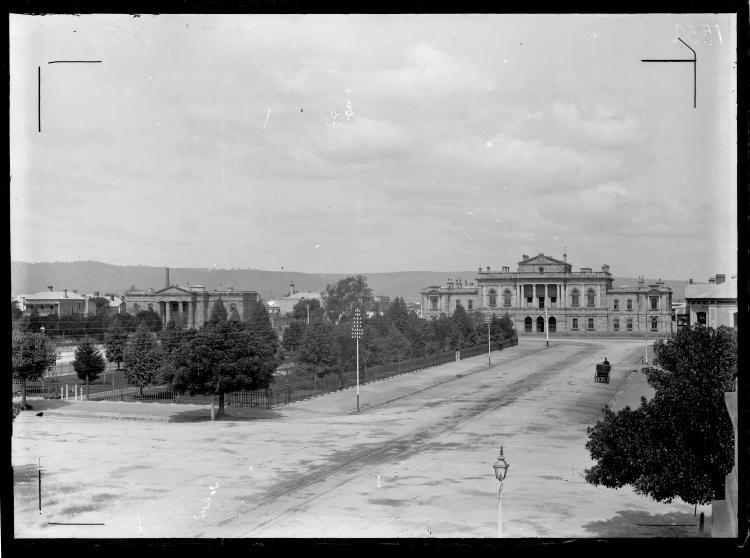
Court buildings in Victoria Square, Adelaide in 1889. The Local and Insolvency Court building (now Supreme Court) features prominently and the old Supreme Court building (now Magistrates Court) can be seen on the other side of the square. SLSA: B 1552
The jury deliberated for two hours before returning a verdict of ‘not guilty’. Mary Schippan left the Court to the cheers and applause of the huge crowd who had gathered to watch the proceedings from both inside and outside the Court building.
Unsurprisingly, Mary became increasingly reclusive following her acquittal. She moved away from Towitta to a small town where she became known as the ‘grey lady’. She later became ill with tuberculosis and spent time in a sanitorium. In early July 1919 she passed away at her older brother’s home near Morgan.
Since then, the question has often been asked – if Mary didn’t kill Bertha Schippan, then who did? Some believe that the real killer was the girls’ father, Matthes Schippan, who was reputed to have had a history of rage and violence. Rumours surfaced that he had confessed to the murder on his deathbed. Berthe had allegedly threatened to reveal that he had killed a local hawker who had come to the house to sell his wares and became overly familiar with Mrs Schippan.
The mystery has never really been solved. Who do you think murdered poor Bertha Schippan?
More to explore
If you want to find out more, the following books are available to read at the State Library, or you could search for these books at your local library.
- Matthews, P. (2010). A Girl Like Me. Penguin Group Australia. (Young Adult Fiction)
- Sumerling, P. (2011). Noon Lady of Towitta, The. Wakefield Press. (Adult fiction)
- Donovan, P. (2004). The Trial of Mary Schippan. Donovan & Associates. (Non-fiction)
- Author: Richard Dutschke (2017). The Towitta tragedy: the true story of the Bertha Schippan murder. Editora: [Australia] Richard Dutschke. (Non-fiction)
- Newspapers that reported on the Schippan case are available to view on the National Library of Australia's Trove website.
- The Schippan Mystery, documentary film, ABC, 1984.
Written by Isabel Story, Engagement Librarian
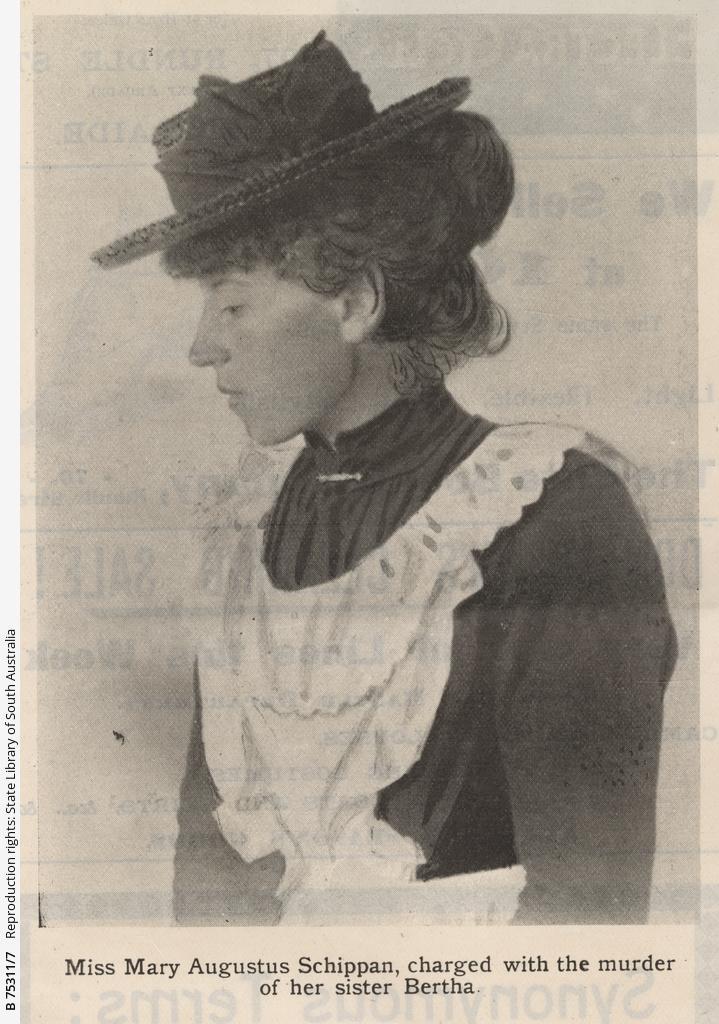
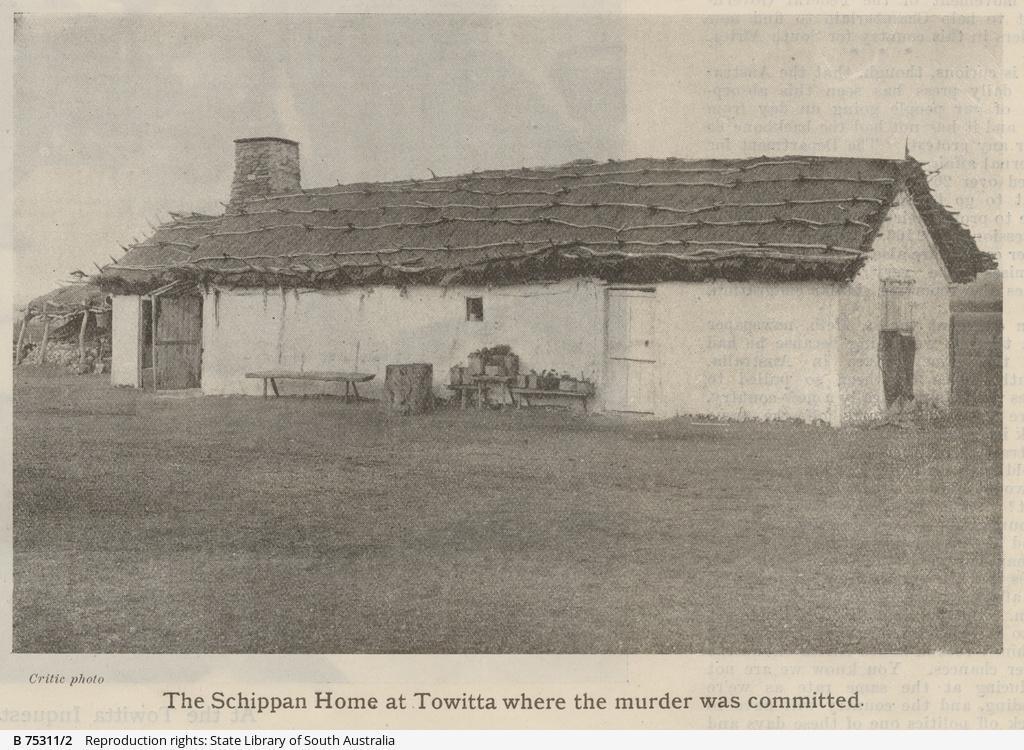
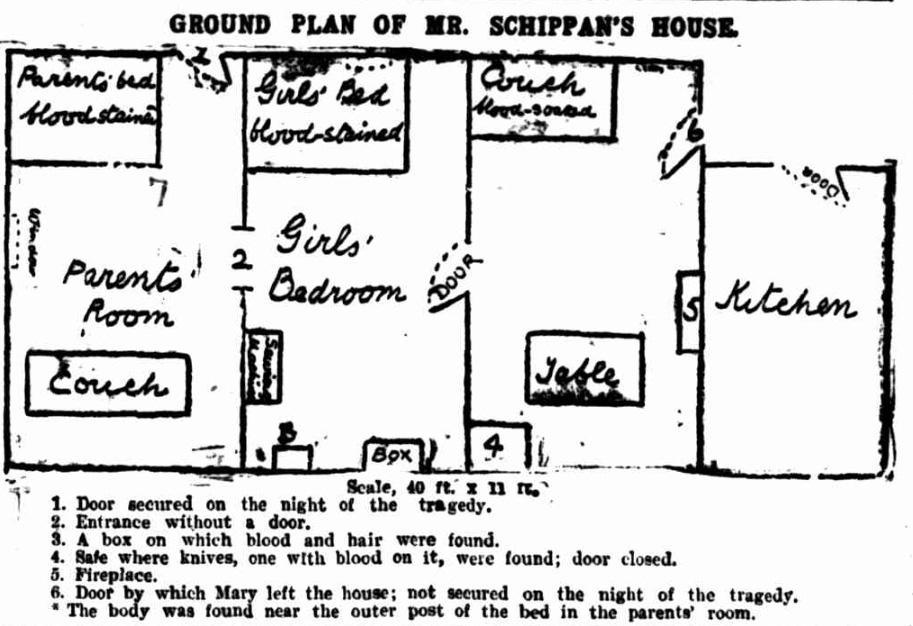

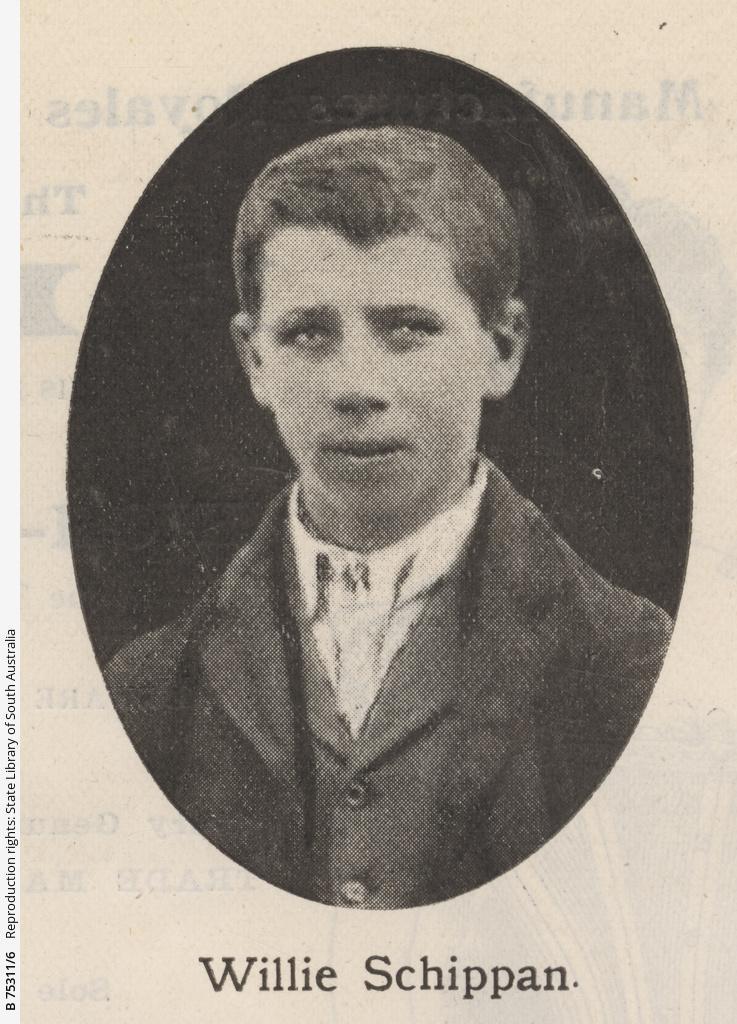
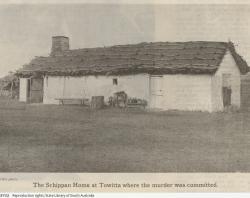
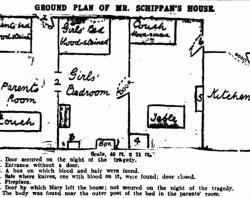
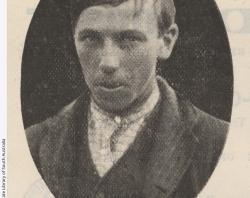
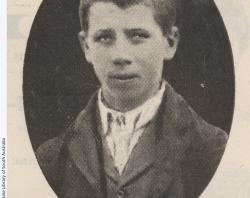
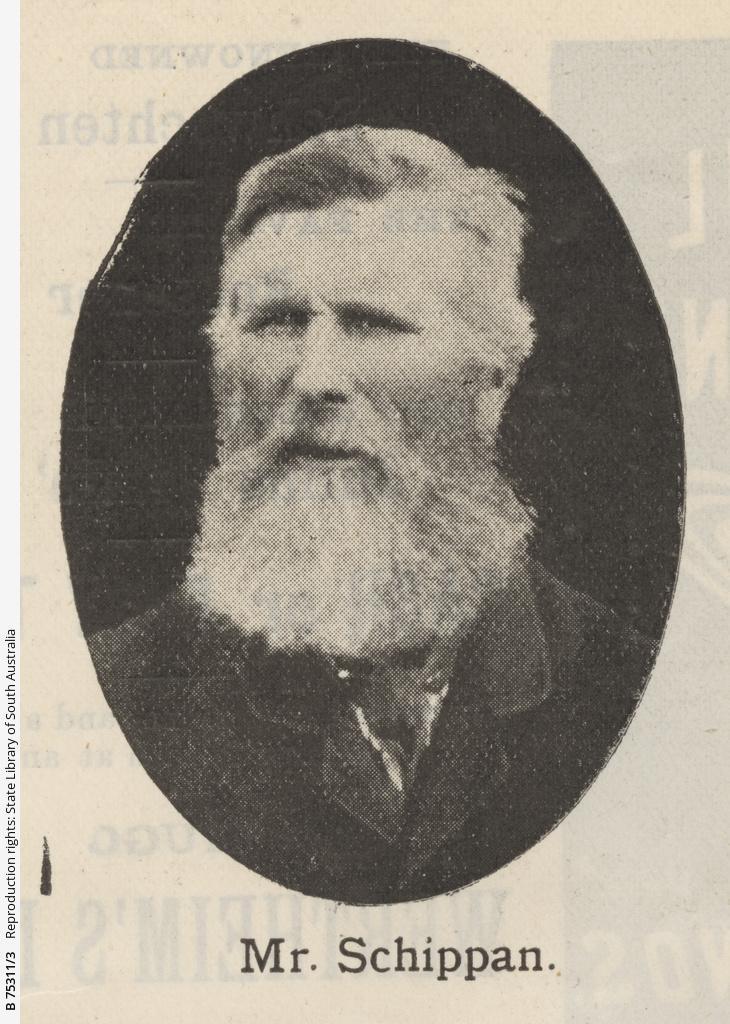
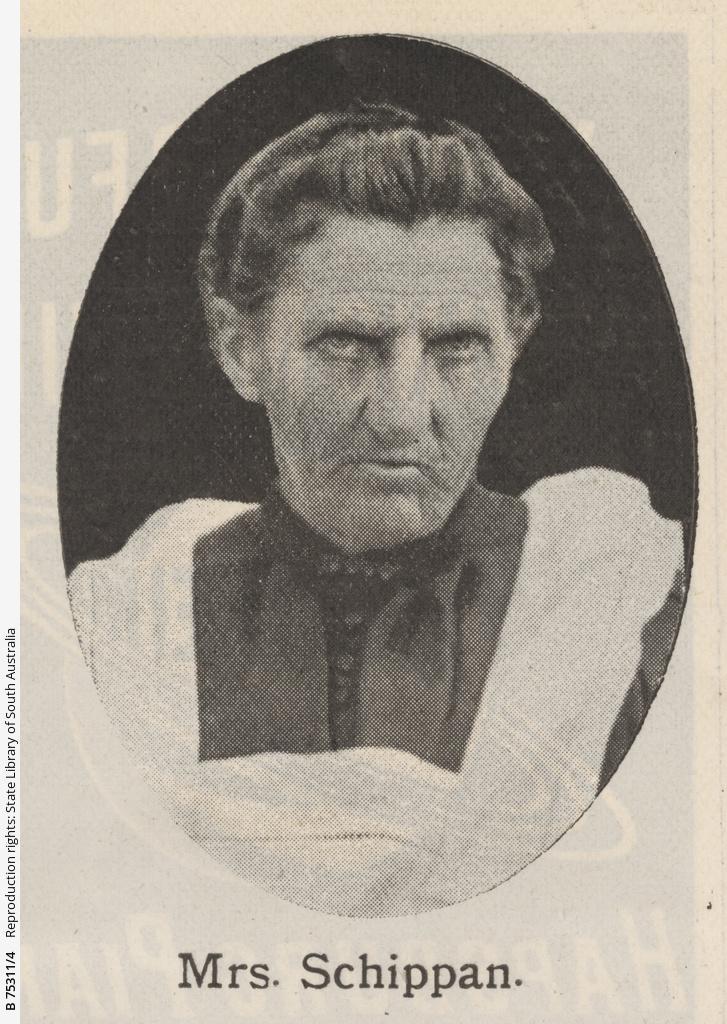
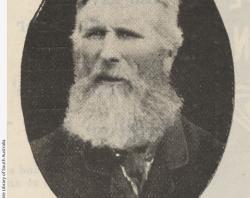
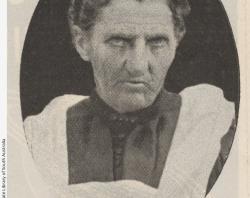
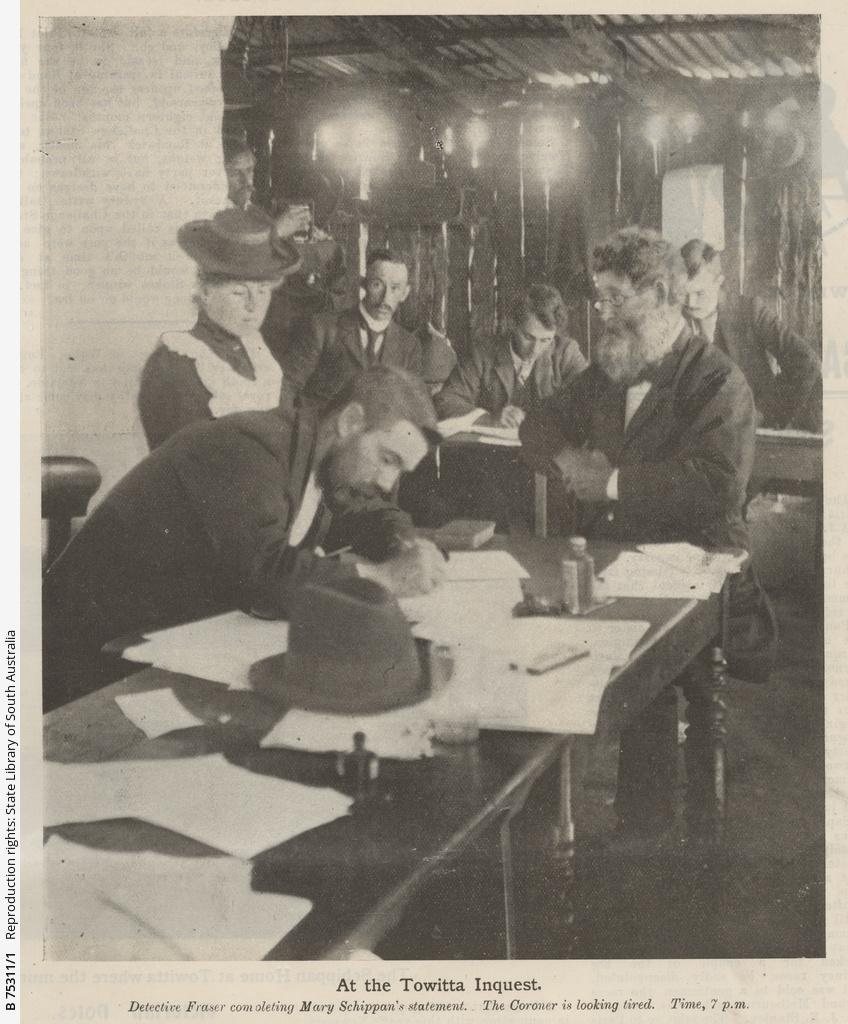
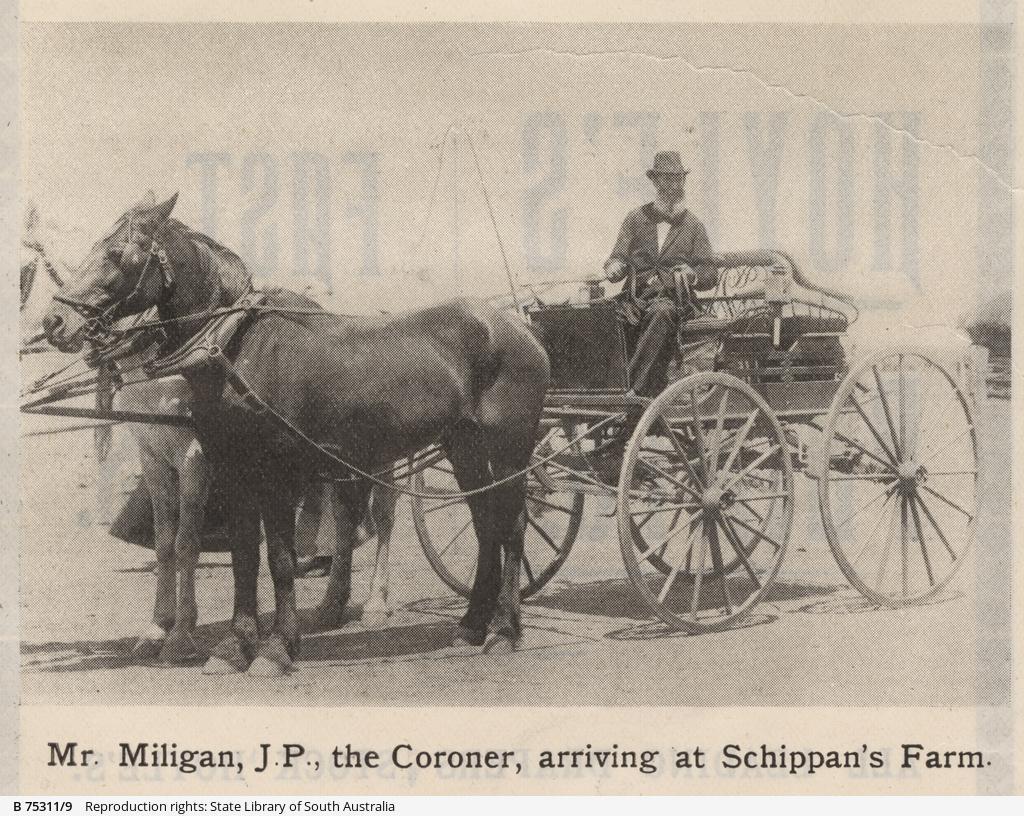
!['Witnesses at the Inquest. [from left] Mr Schippan, Gustave Nitschke, William Schippan'. . Photograph published in 'The Critic' newspaper on 18 January 1902. SLSA: B 75311/10](/sites/default/files/styles/container_large_1x/public/2024-01/B-75311-10.jpeg?itok=pdHRN9rH)
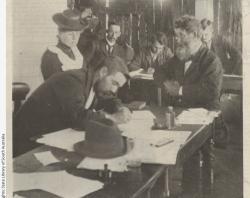
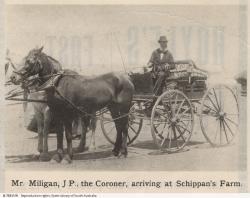
!['Witnesses at the Inquest. [from left] Mr Schippan, Gustave Nitschke, William Schippan'. . Photograph published in 'The Critic' newspaper on 18 January 1902. SLSA: B 75311/10](/sites/default/files/styles/image_slider_nav/public/2024-01/B-75311-10.jpeg?itok=1venvTsO)